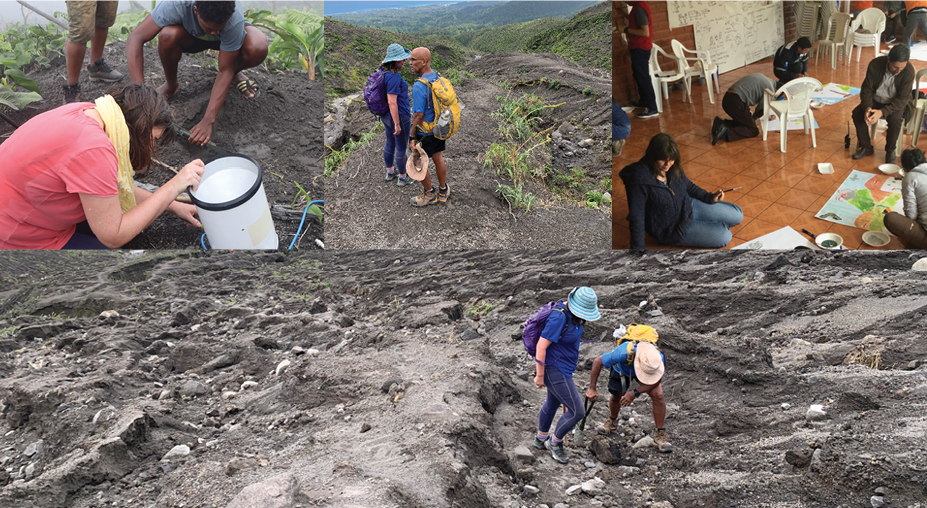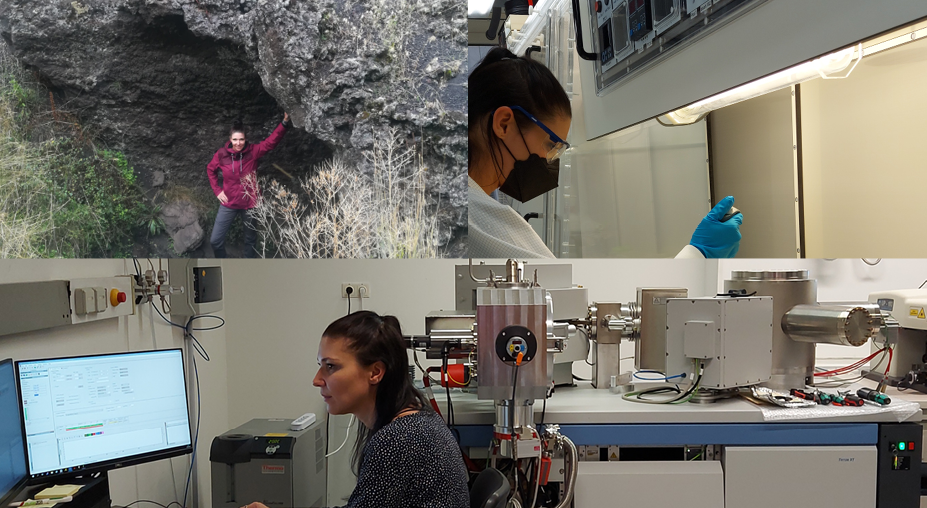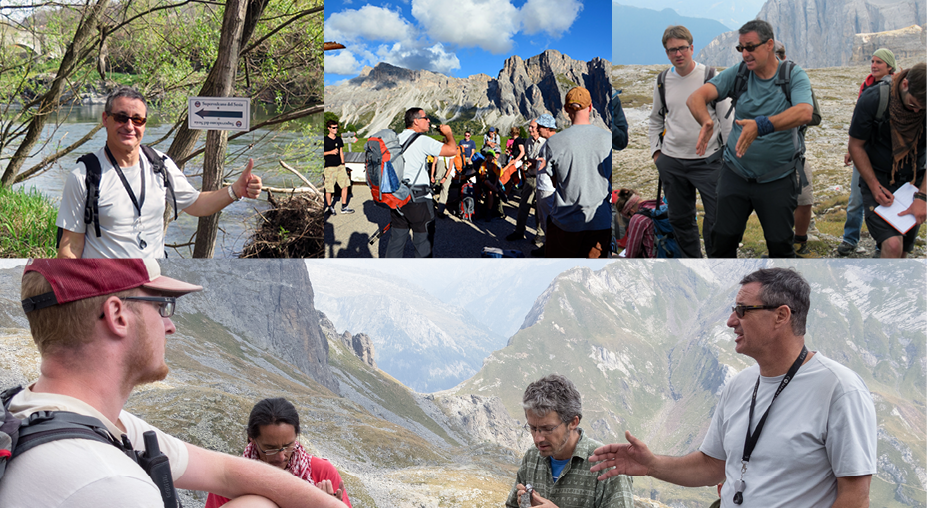Volcanology, Geochemistry, & Petrology Awardees
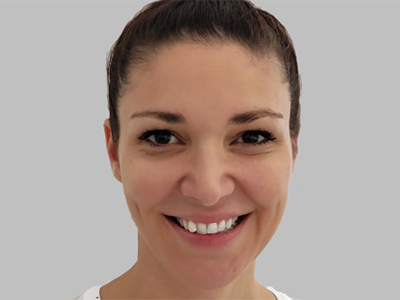
Citation
Dr. Andrea Mundl-Petermeier is recognized with the 2022 Hisashi Kuno Award for incredibly exacting analytical work that was used to extract evidence, using a radioactive isotope that has been extinct for about 4.5 billion years, on the current chemical structure of Earth’s interior. Her demonstration that variability in tungsten isotopic composition still exists in modern mantle-derived rocks is proof that Earth’s interior has not yet mixed away all the consequences of differentiation events that occurred within tens of millions of years of Earth formation. Besides setting limits on the effectiveness of silicate-Earth mixing driven by convection, her work is leading the way to resolving which aspects of mantle compositional variation relate to Earth’s initial differentiation as opposed to the continuing process of crust-mantle differentiation. Her 2017 paper in Science documented a correlation between 182W/184W and 3He/4He in modern intraplate oceanic basalts. The helium isotopic compositions of such basalts have been used for half a century to suggest the presence of “primordial” material in Earth’s interior, but Dr. Mundl-Petermeier’s results instead tie the high 3He component to a differentiated Earth reservoir characterized by low Hf/W that formed while 182Hf was still extant, for example, prior to 4.5 billion years ago. Her results show clearly that these ancient reservoirs have been preserved to the present day somewhere within Earth’s interior.
Besides the exquisitely precise data presented in her papers, equally important have been her thorough and open-minded attempts to interpret these isotopic variations beginning with models for the prolonged mixing into Earth’s mantle of late-arriving extraterrestrial material, to models invoking exchange between mantle and core. If the latter explanation is correct, Dr. Mundl-Petermeier has produced by far the strongest evidence that core and mantle have exchanged at least isotopic signatures through time, and that some intraplate volcanism ultimately derives from near the core-mantle boundary. Both ideas have been discussed for decades, but the conclusive evidence has been missing. Dr. Mundl-Petermeier has contributed the most convincing evidence yet on these important questions regarding the processes that drive the chemical evolution of Earth’s interior. The 11 papers she produced while a postdoc at the University of Maryland represent perhaps the most potentially impactful work ever done in the solid Earth sciences in such a short period by an early-career scientist.
—Richard W. Carlson, Earth and Planets Laboratory, Carnegie Institution for Science, Washington, D.C.
Response
Thank you, Rick, for those kind words, for your ongoing support, and for nominating me for this award! I feel very honored to have received this incredible recognition and would like to thank all the people involved in my nomination, as well as the AGU Volcanology, Geochemistry, and Petrology section and the Kuno committee for choosing me. There are many early-career scientists just as deserving of this award, so I am very grateful!
I am thankful to my Ph.D. adviser, Theo Ntaflos, at the University of Vienna, who introduced me to isotope geochemistry and early on gave me the opportunity to work very independently. He opened the door to international collaborations that resulted in many future opportunities.
I owe this award to my postdoc adviser, Rich Walker, who gave me the chance to work on this very exciting topic of tungsten isotopes. Working as a postdoctoral researcher at the University of Maryland from 2015 to 2018 opened the door for me to work with the best scientists in the field, resulted in long-lasting collaborations, and ultimately set me up for future success. Rich provided incredible knowledge and the necessary working environment for me to achieve the best results possible. I am forever grateful for this opportunity and the continuous support!
To my best friends in geochemistry, Brad Peters and Jesse Reimink: Thank you for making this journey so much fun, for your friendship and collaborations, and for all the doughnuts! I am thankful to all my past and ongoing collaborators and the many people in this community who have supported me throughout my career!
Thank you to my husband, my family, and my friends, who kept me motivated and who always believed in me, and to Leo, who has been by my side every step of the way.
—Andrea Mundl-Petermeier, University of Vienna, Vienna, Austria
Field Photos
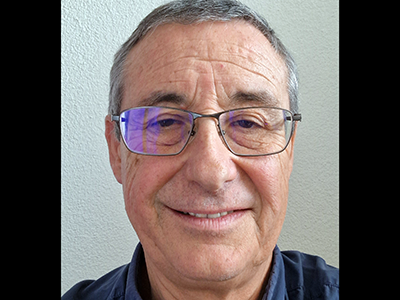
Citation
It is an honor to introduce Peter Ulmer, one of the winners of the 2022 Norman L. Bowen Award of the AGU Volcanology, Geochemistry, and Petrology section. Peter’s breadth of approaches spans experimental petrology, field geology, and magma rheology in a truly exceptional way. Peter started as a field petrologist working on hydrous plutonic rocks in the Alps. The difficulty in retrieving petrological system variables in hydrous magmatic systems and understanding the role of water in magmas inspired his groundbreaking experimental studies ever since. Peter is widely known for exploiting fundamental questions by innovative and carefully designed experiments on subduction zone processes and magma generation and differentiation, with a great eye for big problems. His experimental demonstration of serpentine stability to mantle depth shaped research on volatile cycling in subduction zones for the past 25 years. His discovery changed the perception of hydrous arc magmatism and the subduction zone water cycle and inspired the development of novel experimental and analytical techniques on determining the composition of subduction zone fluids and melts around the second critical end point at high pressure. Peter explored the phase relations of multiply saturated primary hydrous basaltic magmas and their intermediate to felsic distillates that form much of the juvenile continental crust. By simulating both equilibrium and fractional crystallization, Peter showed that fractional crystallization provides in many cases a much closer match to natural rocks, most notably for arc lower crust. The full breadth of these results on transcrustal magmatic systems is yet to be explored. Moreover, Peter’s work on the rheology of particle and bubble-bearing magmas experimentally demonstrated the non-Newtonian behavior of crystal-rich magmas, with implications for the quantitative modeling of magma conduit processes, including the important effects on volatile exsolution. In addition, and perhaps even more important, Peter is a brilliant mentor for Ph.D. students and postdocs, and—rare in academia—incredibly modest. He is an inspiration for young scientists and an extraordinary fount of knowledge on all matters experimental. The diversity, rigor, and creativity in Peter’s experimental research are an extraordinary match to Bowen’s legacy.
—Othmar Müntener, University of Lausanne, Lausanne, Switzerland
Response
Thank you, Othmar, for the kind citation and for more than 20 years of intense and fruitful collaboration and friendship. Thanks to those who supported my nomination and the Volcanology, Geochemistry, and Petrology Award Committee for selecting me. I am truly honored and humbled to receive the Bowen Award.
Of course, this is more than honoring an individual but a career based on interaction and collaboration with numerous mentors, peers, and students. Volkmar Trommsdorff, Alan Thompson, and Ezio Callegari, all experts combining field, geochemistry, and petrology, introduced me as a student at ETH Zurich into the challenging world of petrology. Studying the Adamello plutonic complex in the Southern Alps, I realized that unraveling the formation of arc-related rocks requires more than conducting fieldwork and analyzing rocks. Alan nudged me to study The Evolution of Igneous Rocks by Bowen, which I did with limited motivation considering the “ancient” publication date. This, however, completely changed my view on how to tackle igneous rocks based on profound knowledge of phase equilibria representing the thermodynamic control on evolution and composition. Understanding arc petrogenesis requires fundamental understanding of phase relations in hydrous systems from magma generation in the mantle to differentiation and emplacement in the crust. This motivated me to apply for a postdoc at the Geophysical Laboratory, allowing me to learn the trade of experimental petrology from the very experts. Bjorn Mysen, Ikuo Kushiro, Neil Irvine, Hatten Yoder, and Joe Boyd are ultimately responsible for turning a “field guy” into something like an experimental petrologist, both intellectually and technically, and deeply influenced the way I perceive igneous processes. Back at ETH, I had the opportunity to expand the existing experimental petrology lab together with Max Schmidt and Stefano Poli constituting the nucleus of what became an established experimental lab. Thank you for your continuous support and friendship.
The generous support by ETH allowed me to conduct research in the most unrestricted way and in close collaboration with great colleagues, postdocs, and motivated students. This included field campaigns to some of the most amazing places such as the Kohistan arc with Jean-Pierre Burg, Patagonia with Othmar and Lukas Baumgartner, and the Sierra Nevada with Tim Grove and Tom Sisson. Keeping a firm grip to the “ground” in the realm of real rocks is essential to identifying crucial processes and unresolved questions in Earth sciences and nourishes my fascination and passion to contribute to resolving the mysteries of continental crust formation.
—Peter Ulmer, Institute of Geochemistry and Petrology, Swiss Federal Institute of Technology (ETH) Zurich, Zurich, Switzerland
Field Photos
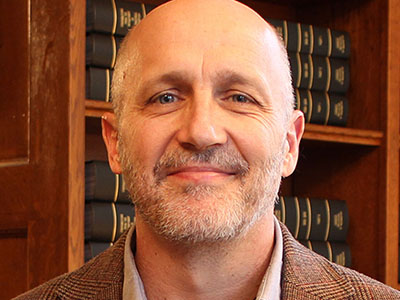
Citation
Mike Walter is an experimental petrologist who, like Bowen, asks major questions about Earth. His career began with the resolution of a large number of questions surrounding the compositions of melts and residue produced during partial melting of upper mantle peridotite. Starting with a simplified system, Mike elucidated the key melting reactions; the stability fields of garnet, plagioclase, and spinel; and the changing compositions of melts with increasing pressure and temperature. His paper is an experimental classic, painstaking in execution, remarkably rich in detail and insight. It provided a powerful framework for the interpretation and extrapolation of data on the more complex natural systems that he addressed next. Mike showed that partial melts of fertile peridotite shift from basaltic at low pressure through picritic to komatiitic at approximately 6 gigapascals. In this paper (1998) he also showed the compositional relationships between melts and peridotitic residues for carefully estimated fractions of melting. This is still the classic and definitive work on the pressure dependence of anhydrous peridotite melting (>1,100 citations).
Mike was the first to demonstrate the profound effect of pressure on core-mantle partitioning of nickel (Ni) and cobalt (Co). This led to the model of core segregation at the base of a deep magma ocean, the now generally accepted explanation for the apparent overabundance of siderophile Ni and Co in Earth’s mantle.
Moving into the lower mantle, Mike’s paper on trace element partitioning between perovskite and silicate melt (2004) showed that despite numerous assertions to the contrary, there was no isolation of a large perovskite-rich reservoir in the lower mantle at the end of the magma ocean phase of Earth’s accretion. The need for natural samples to compare with experiments led him into the study of inclusions in superdeep diamonds. In 2011, Mike showed that compositions of some inclusions matched precisely those expected for minerals formed from oceanic crust subducted into the lower mantle. When coupled with isotope measurements indicating formation of the diamonds from surficial carbon, this provided the first direct evidence that surface material is subducted to these depths and later exhumed. This and his succeeding studies on diamond inclusions have had a remarkable impact on our perceptions of both Earth’s convective cycle and the deep carbon cycle, providing some of the only direct constraints on both processes. Cast from the same mold as Bowen himself, Mike Walter asks the important questions and gets the right answers.
—Bernard J. Wood, University of Oxford, Oxford, U.K.
Response
I thank Bernie Wood for his gracious citation, the generous colleagues who gave their precious time to support my nomination, and the Volcanology, Geochemistry, and Petrology committee for acknowledging me when there are so many worthy folks in our community. I am ever thankful for the scientific and personal freedoms I have enjoyed throughout my journey, especially when these gifts are not available to everyone. No one achieves anything without the help and encouragement of others, and there are so many people who have taught, guided, and supported me along the circuitous path I have trodden across three continents. It would be impossible to name each in the space available, and I sincerely thank all of you. Yet there are those whose indelible imprint must be highlighted: Harmon Maher for believing in a late-blooming kid; Dean Presnall for instilling a deep respect and understanding of the power of phase equilibria as a tool for problem-solving in the tradition of Bowen; Ikuo Kushiro for inviting and welcoming me to the high-pressure paradise that is Japan and encouraging me to explore new horizons while tolerating my many egregious shitsugen; Eiji Ito for his kindness and for revealing the dark arts of the multianvil; Dave Walker for letting me in on his “rules”; my most excellent colleagues and friends in Bristol and throughout the United Kingdom from whom I learned and gained immensely, both scientifically and personally, not to mention the many poker nights at Blundy Towers when petrology and straight flushes comingled like crustal magmas; and not least of all the many outstanding students and postdocs who have done the lion’s share, kept me on my toes, and made synchrotron trips so enjoyable. It has been a great privilege to work at the institution that crystallized Bowen himself, first as a postdoc at the Geophysical Lab when Yingwei Fei gave me carte blanche in his high-pressure lab allowing me to become truly independent. I am grateful to my colleagues at Carnegie for welcoming me back into the fold after many years in exile and for their boundless scientific curiosity and enthusiasm. Science has evolved tremendously over the decades, becoming necessarily multidisciplinary to answer the complex questions of planetary formation and evolution. I can only imagine what Bowen would do with the tools and diversity of talented people we enjoy today to explore the Earth, planets, and new worlds beyond our solar system.
—Michael J. Walter, Carnegie Institution for Science, Washington, D.C.
Field Photos
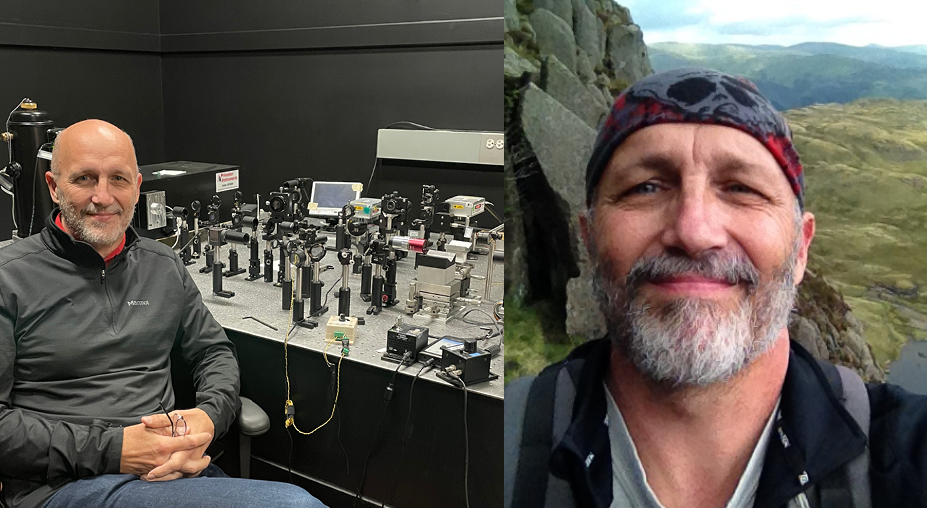
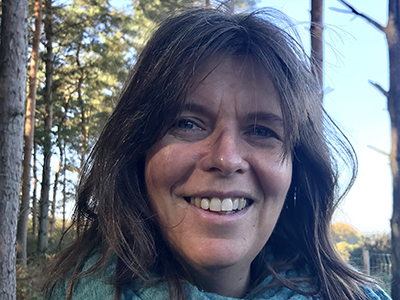
Field Photos
